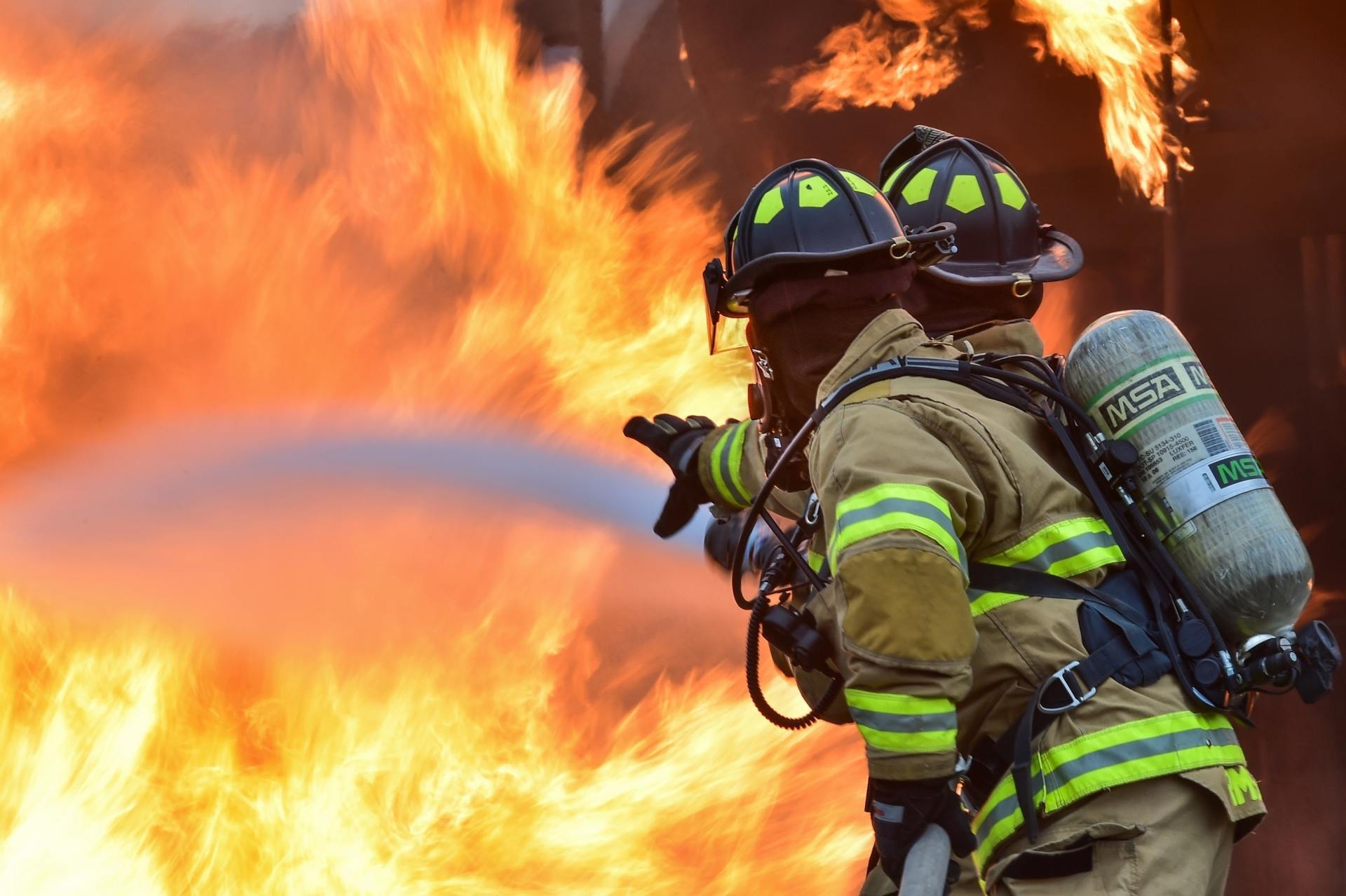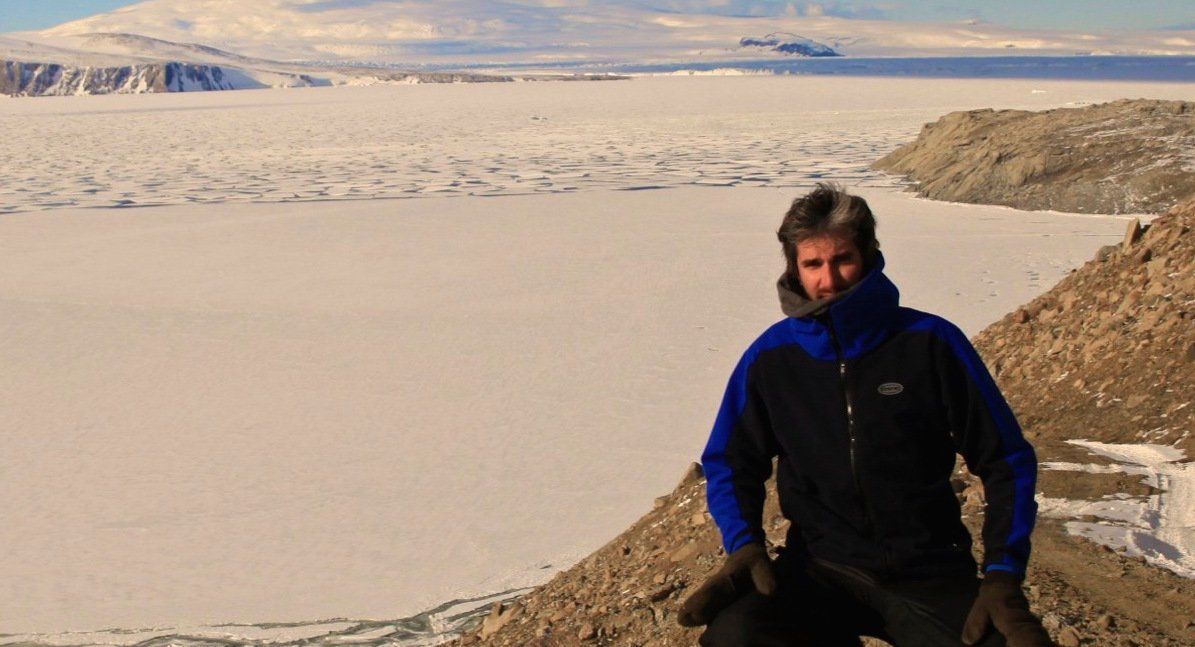Start creating products which work.
Book Now
About Me
Hi, I'm Stanley Russell.
I'm a fellow of the Textile Institute with over 40 years experience within the Textile Industry covering weaving, dyeing, Coating and lamination
Let’s Talk
Do you want to create the Future Now: Get in touch to create market leading cutting edge Textile solutions
Contact Us
Testimonials
Blog

How outer shell fabrics are your first line of defense Discomfort used to be a price you paid for protection, but here’s how that changed Jun 28, 2019 Sponsored by TenCate Protective Fabrics By Robert Avsec for FireRescue1 BrandFocus Heat stress and its physiological impact on a firefighter while wearing and working in their structural firefighting protective ensemble, PPE, has been garnering more attention in recent years in our efforts to improve firefighter safety. PPE manufacturers are constantly searching for new ways to keep firefighters safe from the external threats (e.g., thermal, mechanical, liquid) while at the same time lessening the impact of heat stress on the firefighter inside the garment. I had the opportunity to speak with Jordan Davis, end use market manager for emergency response for TenCate Protective Fabrics, to learn more about TenCate’s latest fabric innovation, Enforce Technology, that’s been developed by TenCate scientists and engineers. According to Davis, when he works with fire department leaders and their firefighters to discuss PPE buying decisions, he focuses on three things: The health and safety of the firefighter wearing the PPE (which historically has been linked to thermal protection) The gear’s performance (e.g., comfort, flexibility, breathability) The gear’s durability (Fire departments have a fiduciary responsibility to purchase gear that not only does the above, but also lasts). From there, according to Davis, there are always three other conversations that take place regarding what a fire department is looking for or needs from their PPE: Protection from exposure to toxic materials on the fire scene Protection while working on non-fire emergency call (e.g., motor vehicle extrication, technical rescue) Protection from heat stress and its impact on the firefighter (e.g., sudden cardiac events, heat exhaustion, heat stroke) “That seems to set the stage pretty well for what they need to accomplish with their buying decision, and it helps them realize that what they're really involved in is a balancing act,” said Davis. “How do we select an ensemble that addresses all of these factors the best way that we can and stay within our budget?” Davis went on to say, “And that philosophy is really the underpinning of how we go about our research and development process. Can we engineer those properties into a fabric that will help us address those factors in the best way possible for our client fire departments?” OUTER SHELL PERFORMANCE NFPA 1971: Standard on Protective Ensembles for Structural Fire Fighting and Proximity Fire Fighting, addresses the level of performance every PPE manufacturer needs to build into their ensemble elements. Until recently, those performance measures for the outer shell (fabric) have focused on protecting the firefighter inside from flame impingement and mechanical injuries (e.g., cuts or scrapes). That outer shell (the first layer) was also designed to work in conjunction with the moisture barrier (second layer) and the thermal barrier (third layer) to protect the firefighter from external heat and fluid hazards (e.g., body fluids, hydraulic fluid). But meeting those requirements has often resulted in PPE that firefighters found to be stiff and hard to move in when new; they also complained of how long it took to “break in” that new turnout gear. So, with that kind of feedback, manufacturers like TenCate went “back to the drawing board.” And back to the drawing board for TenCate meant focusing its scientists and design engineers on developing an outer shell fabric that was lighter and that moved better. The result was Enforce Technology that not only improved comfort for firefighters, but also helps reduce work effort by not having a stiff outer shell impeding their movement. And all while still providing thermal and abrasion protection that’s compliant with NFPA 1971 requirements. According to Davis, having a lighter and more flexible outer shell that moves with you is more than just an advancement in firefighter comfort. “It also means that the firefighter wearing the garment is not working harder because they’re working against their turnout gear,” said Davis. “Less effort means less exertion and less exertion means less buildup of body heat. And that buildup of body heat is where the effects of heat stress start.” THE TENCATE DIFFERENCE What makes TenCate different when it comes to developing technologies like Enforce, and creating fabrics that better meet the needs of the fire service, is that they own the process. “We’re unique in that we have the technology and the capability to own the entire process,” said Davis. “We're buying raw fibers from PBI from DuPont, from other suppliers, and we're taking those [raw fibers] all the way through the process to make our own yarns.” TenCate then uses those yarns to weave their own fabrics, fabric that will become the outer shell for firefighter protective garments. TenCate then takes those fabrics and finishes them and dyes them before sending them on to manufacturers who will cut, sew and sell them. “We have a lot of control within that process and we see every step in it,” said Davis. PPE PERFORMANCE STARTS IN THE YARN The outer shell of firefighter PPE begins as fibers, which are turned into yarns, and then the yarns are woven into fabrics. The most common fibers used in creating yarn for outer shell fabrics are staple fibers and filament fibers. “Spun yarns [where more than one fiber is spun together into a yarn] have better abrasion resistance characteristics,” said Davis. “Fabrics made with filament yarns [where a continuous fiber is used in the spinning process] have a higher tear strength and they also have a better feel to them which is why you see filament yarns used in fabrics for thermal barriers. It feels better on the skin.” According to Davis, Enforce is a hybrid yarn that combines the best features of a spun yarn with those of a filament yarn for a synergistic effect. “Both our Pioneer and Agility lines of firefighter PPE are the first to use our new Enforce Technology,” said Davis. “With that, we’re able to create an outer shell that’s lighter and more comfortable for the firefighter—right off the bat—while still having a high degree of thermal and abrasion protection.” Turnout gear fabrics using Enforce Technology, and its innovative twill weave, ensure a range and ease of movement that firefighters want and need to remain on the job and in the action. And that turnout gear is as much as ten percent lighter than gear made using legacy fabrics. “These benefits are enhanced even further when combined with a TenCate cutting edge thermal liner utilizing Coolderm Technology and Nomex Nano liner," added Davis. "Coolderm allows your turnouts to perform like high-end active wear- actively pulling sweat off of the body and promoting evaporative cooling. " Add Nomex Nano to the thermal liner batting to improve flexibility even more, decrease bulk by up to 40%, increase breathability by up to 13%, increase wick-ability, and decrease dry-times. If you're looking to provide better heat stress management for your firefighters, then here's a formula Davis recommended. You take TenCate lightweight outer shells with Enforce, combine them with a pro-quality thermal liner with Coolderm Technology’s active moisture wicking, add in a layer of Nomex Nano in the thermal liner batting and you have a set of turnout gear that revolutionises heat stress management. Put all of that together and you have turnout gear that protects the firefighter on the inside from external hazards while at the same time making it easier for that firefighter to move and work. And that makes for a protective ensemble that can reduce the impact of heat stress on that firefighter as well body .

WHICH BASE LAYER - A BUYERS GUIDE Base Layers, sometimes referred to as Foundation or Primary Layers, form the basis of any clothing layering system. Designed to sit next to the skin and "Wick" sweat away to provide a dry "Thermally Regulated" result. They are NOT just for the cold weather as many people think. By wicking moisture from the skin, a Base Layer will help keep you warm or cool depending on the fabrication but ultimately "thermally regulated" to achieve that Goldilocks result regardless of the conditions. There are "very" significant differences between fabrics on the market but it is essential that you get a fabric that works with your body. Slapping on a thin 100% Lycra "skin" that has no technical properties, will ultimately be counter-productive. Baselayer.co.uk holds a wide selection of top brand name base layers made from a variety of fabrics for every condition and requirement you may have. This guide is designed to provide you with every conceivable option you might experience to ensure you get the item you need. GARMENT CHOICE: Choose the one that works for you. All the technical fabrics we have within our range have various features and benefits and each has its own merits but critically, you should look for four primary fabric Considerations: Wicking: Does the fabric wick effectively? Fit: Does the garment fit you and is comfortable next to your skin Seams: Does it have a seamless structure or flat locked seams that won't rub Odour Control: Being next to the skin, does the fabric have natural or man-made anti bacterial properties that will absorb or eliminate fabric odours occurring Durable: Is the fabric durable enough for the function you are looking for. Avoid Cotton: Cotton retans moisture for a long time and doesn't seek to move it away from the body. Cotton is a killer when it comes to base layers. FABRICS Merino Wool Merino wool is the result of millions of years of R&D by Mother Nature herself. Rich in natural properties that inspire some of the worlds' leading brands, its unique properties enable it to be manufactured into a wide range of luxuriously soft and stylish clothing with some key benefits. Merino is ethical, soft and has natural odour prevention properties as well as very effective thermal properties that can also be combined with synthetics for additional durability and performance. Basically, the heavier the weight per Square Metre (GSM) the warmer the garment but equally the more expensive. For a real in depth analysis of Merino Wool, click here and read at your leisure. Polyester Polyester is a very clever technical fibre. Strong, highly efficient at managing moisture, resistant to stretching and very durable making it an ideal fabric for use in base layers as they ensure garments remain close fitting as intended. Moisture Wicking: Polyester has exceptional wicking capabilities and is very fast drying. Many brand names are affiliated to Polyester including CoolMax™, ThermoCool™, DriFit™, HeatGear® and ColdGear®. Odour Resistant: Whilst not possessing any "natural" fabric odour defence like Merino and Silk, a decent Polyester base layer is usually combined with some technical wizardry that prevents bacteria infesting the fabric that can cause fabric odours occurring. In-built chemical treatments at production and the use of Silver Ions both resist the bacteria that can cause fabric odours. Silk Another natural fibre of course and one that many use in warmer conditions but equally effective in cold conditions. Silk has many of the properties of Merino Wool but the fibres are even finer that wool so can be woven into incredibly fine garments and is therefore often preferred next to skin ahead of wool. But as a general rule, Silk is not as effectively thermally efficient as wool but does have many positive attributes. Moisture wicking, natural anti bacterial resistant, super soft, easy wash and no ironing are all positives to considering Silk for your base layer. Polypropylene Another synthetic fabric that has evolved brilliantly as fabric technologies have advanced. Polypro is the thermal king of synthetics constructed using long strings of lightweight hollow fibre and is exceptionally thin so can be woven into almost any shape and finish desired. Polypropylene is Hydro-Phobic....it hates water. As a result it acts continuously as a conduit for moisture rather like an ultra-fine straw so it moves sweat and moisture very fast indeed. This means that Polypro garments keep you dry as well as warm. A good example of a fast dry fabric is the Helly Hansen Lifa product, regarded by many as the best example of a stay dry base layer. Polypro like Polyester is also very durable so is ideal as a fibre within a base layer. Again a good Polypro garment will have integrated anti-bacterial treatments in the same way as Polyester to eradicate bacteria that can cause fabric odours. FITTING, DESIGN & SEASON A base layer will either be a compression fit or fitted design. A loose fitting base layer isn't a "base layer" at all.....it's a Tee shirt or a second layer garment. Base layers aren't necessarily just for the cold. A quality base layer should be the basis of any layering system and can be used in every season. A thermal base layer will provide added warmth. A specific base layer light in construction, offer a cooling effect and prevent uncomfortable moisture build up in warm conditions as well as defending against harmful sun's rays. Think about that bead of sweat rolling down your back in the height of summer.........Exactly! Summer specific and winter specific base layers have distinct differences in fit, design and appearance. Summer Base Layers: Summer base layers focus primarily on wicking away sweat or "managing" moisture, to prevent an uncomfortable build up of perspiration on the skin or on your shirt and shorts. These base layers are made of extremely thin, light fabric or can even be mesh. Wearing a base layer underneath your kit even in the summer can stop uncomfortable thigh chafing, nipple rub and sore arm pits and stops your workout gear becoming damp with sweat. Summer Base Layers can be Compression Fit or Fitted depending on the brand, the material and the objective required as well as the desired fit. Long Sleeved, Short Sleeved, Shorts or Leggings are amongst the choices for a Summer use base layers and synthetic and wool are both desirable fabrics Spring/Autumn Base Layers These base layers are for the "transition" seasons and therefore resemble a compromise between sweat management and thermal warmth. These can be a slightly thicker fabric and a combination of Polyester & Polypro, Merino Blend or 100% Merino Wool. Some brands now combine the obvious benefits of Merino Wool with Synthetics to get the best of both worlds such as Helly Hansen®, Under Armour®, Lyle and Scott® and Odlo®. Again, Spring/Autumn Base Layers can come in Compression Fitted designs depending on what each individual desires and can be long sleeve, short sleeve or shorts or tights. Winter Base Layers The most popular of the Base Layer family and the reason most people elect to wear one....to stay warm! Winter Base Layers focus on keeping the "core" of your body warm. If the "core" or torso is kept warm, then the rest of the body is easier to keep warm. Consider your "core" as the boiler and your hands and feet as the radiators to use a heating system analogy. If the "boiler" is hot, then the radiators are hot. If you insulate the boiler and the radiators, then that valuable heat is retained. Warm "core" = warm hands and feet. Winter Base layers can come in a variety of fittings from Compression to Fitted and some tops have thumb holes to provide coverage to the hands if desired. Made from a variety and usually a combination of, Wool, Polyester and Polypropylene, different brands adopt different methods to ensure your thermal comfort. DECIDING How do you decide what you need? There is no one base layer that does all things despite some manufacturer's claims to the contrary. You ideally need a base layer for each season to ensure maximum comfort with increased warmth in winter and the benefits of wicking materials, to dissipate perspiration, in the warmer months. Having a good base layer can significantly improve your comfort and enjoyment for all seasons and all sports and leisure activities. The fabric you choose for will depend on your budget, your tastes, preferences, what you intend to use the product for and even allergies. Merino wool is normally more expensive than synthetics due to the expense of sourcing the relatively rare natural material. However, it may be worth spending more on merino if you are going to be using it frequently for commuting or walking when you will value the natural odour resistant properties and soft feel as well as the thermal properties. As a general rule for more dynamic contact sports such as Football or Rugby, a Poly based garment is more durable and more easily washed of mud and grass stains. For Skiing, Cycling and Hiking there is a wider choice and Merino is equally at home under your ski wear as are Poly fibres. There are also numerous brands that combine Poly fibres with Merino to offer you the best of both worlds. It is also important to ensure you get a base layer that fits you well; base layers are designed to be a "second skin" therefore a close fitting profile is more beneficial. Sizes vary between manufacturers, so check the Size Guide on individual products that you buy. #BASELAYER




